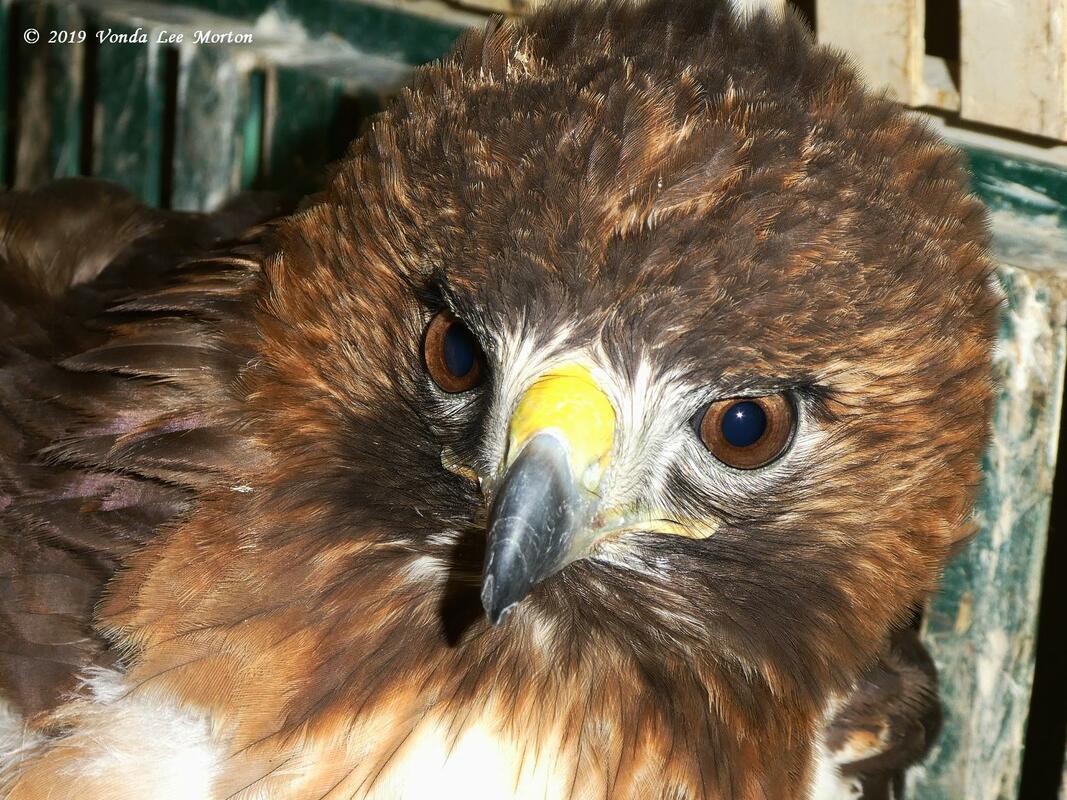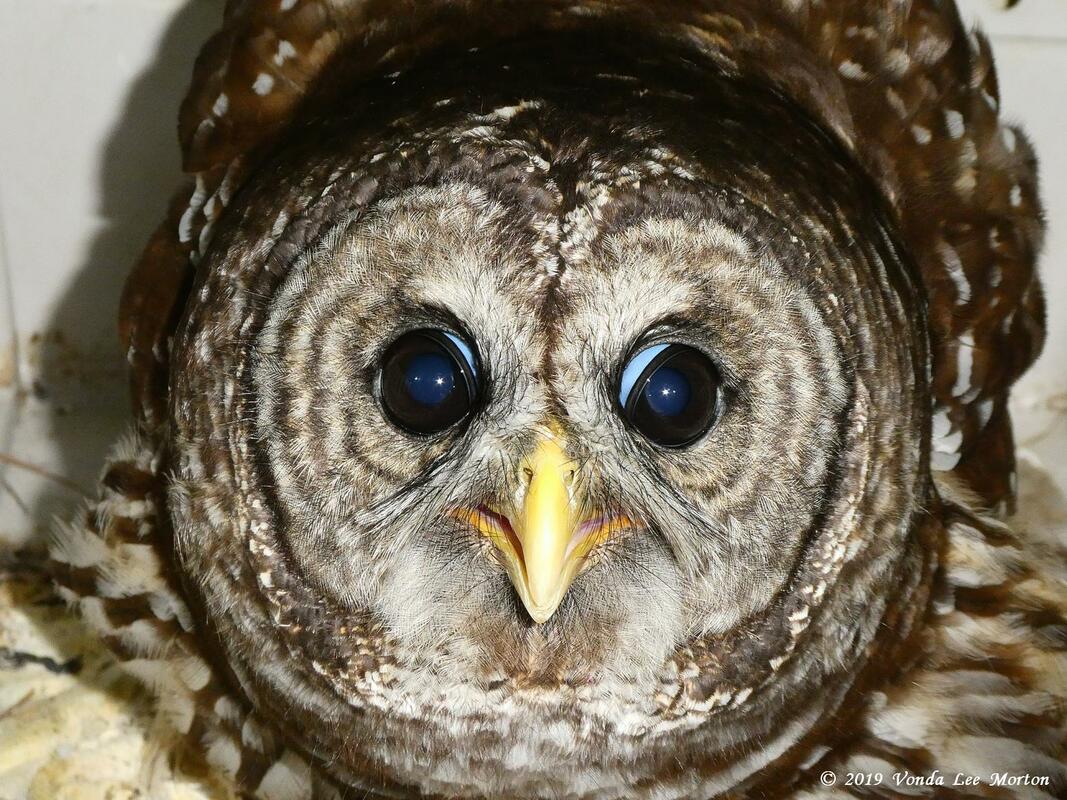The cardinal wasted no time skedaddling when he was offered his freedom—always good!
The Coop is bouncing off the walls—no, literally, he’s slamming himself into the sides of his box, which is another reason it’s best to house some rehab birds in cardboard boxes. In anything harder, he’d do some damage to his feathers and possibly his paranoid little Coop brain. We’ve got nasty, cold weather predicted for at least the first part of this week, though, so his little feathered butt will remain indoors for another few days.
Friday, a volunteer transporter called to say a mammal rehabber (who’s terrified of me and won’t communicate with me directly—long story) in a neighboring county was going to pick up a hawk with a broken leg. Hmmmm….what are the odds?
Another volunteer transporter picked up the bird and got it to me about dark; apparently the mammal rehabber was told the idiots with the bird had placed it in the back of their truck and fed it hot dogs for two days. When we opened the box, the hawk, a mature male red tail, had an open leg fracture, mid-bone. The exposed bones were already drying out and dying; the flesh around them was black. And he had no neurological response at all in that foot. There was no humane option other than euthanasia. And what makes me so angry is if the callers had gotten the bird to me when they originally said they would, his suffering could have been ended two days earlier. Maybe not a huge amount of time in the grand scheme of things, but I cringe at the thought of an animal suffering needlessly for two days because idiots think it’s neat to toss him in the truck bed and feed him hot dogs and can’t be arsed to do the right—the HUMANE—thing and get the bird to a rehabber.
And before anyone asks, no, the leg could not be amputated. Federal regs clearly prohibit that, and for good reasons: first, amputating the leg would mean a nonreleasable bird—raptors in the wild need full use of both feet in order to be effective hunters—so he’d have to be placed as an ed bird somewhere. Red tails, for all their majesty, are fairly common birds, so it’s hard to place them as ed birds. Second, with all his weight on one leg, the hawk would be prone to bumblefoot—pressure sores—on his remaining foot. He’d spend the rest of his life at risk for or being treated for these sores, because he’d have no way to shift his weight from one leg/foot to the other.
And yes, I know birds survive in the wild after traumatic amputations in nature. It happens. But usually these are smaller, lighter birds, most often songbirds or smaller raptors, and it’s usually only the foot that’s missing, so they have a stump to alleviate some of the pressure on the intact foot.
The takeaway? The usual: GET INJURED/ILL/ORPHANED WILDLIFE TO A PROPERLY PERMITTED REHABBER ASAP. DON’T WASTE TIME! If its injuries are so severe as to preclude rehab, we can at least offer it release from suffering in the form of humane euthanasia.








 RSS Feed
RSS Feed
